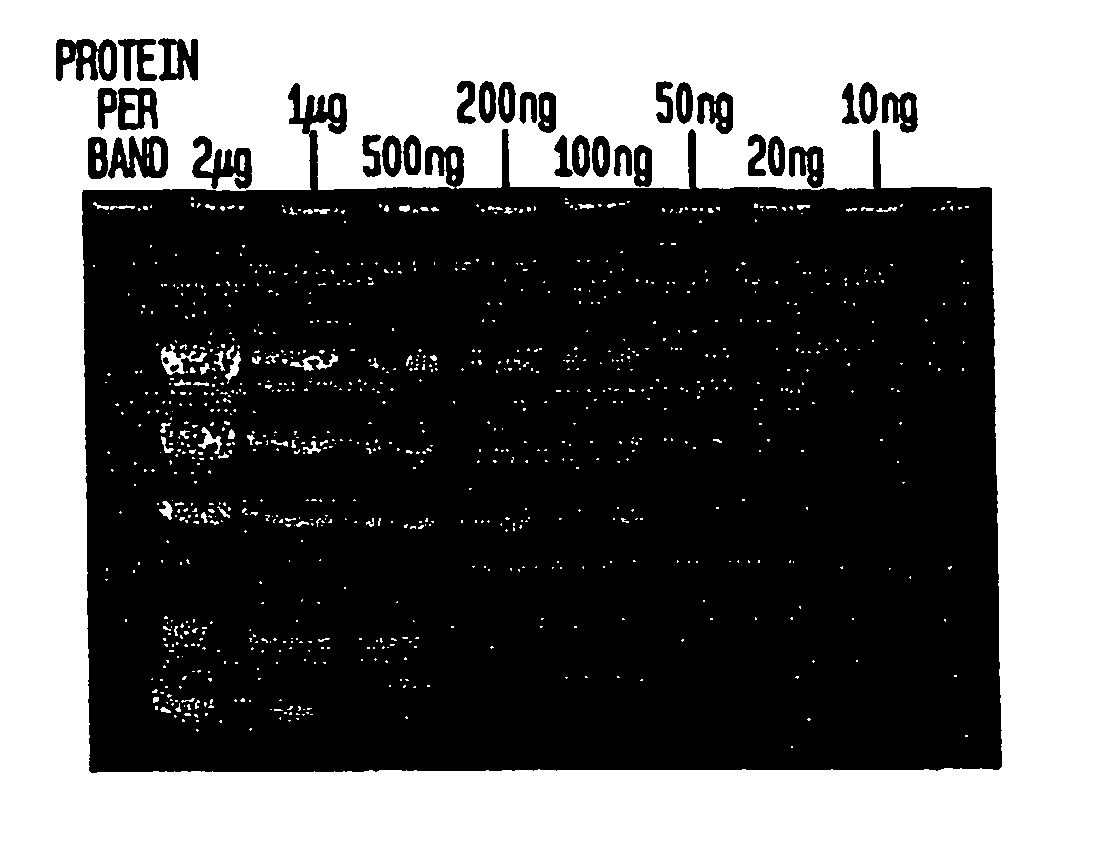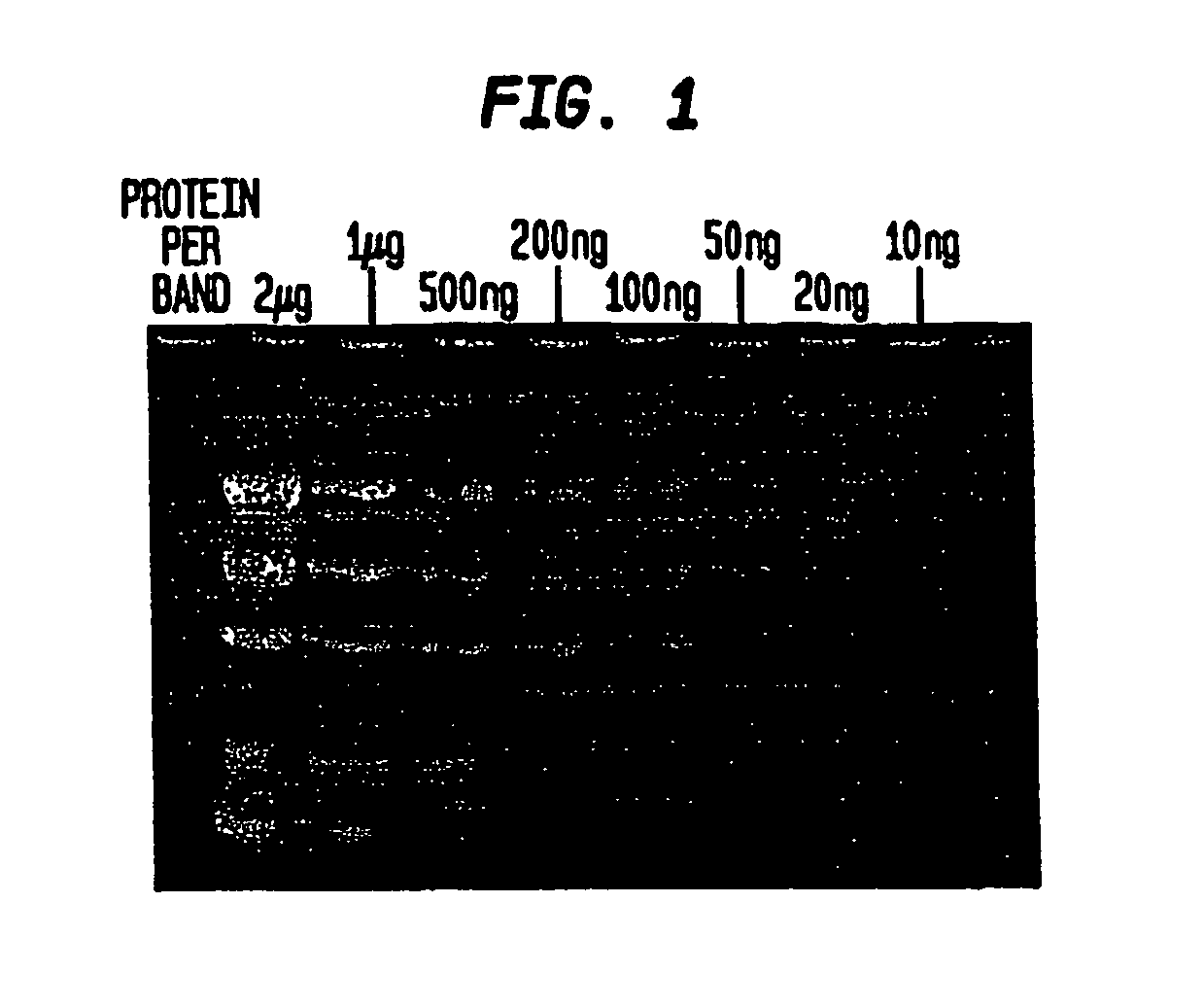In-gel fluorescent protein staining technique
a protein staining and gel technology, applied in the direction of fluid pressure measurement, liquid/fluent solid measurement, peptides, etc., can solve the problems of inconvenient post-electrophoresis gel staining and destaining, loss of protein band signal, time and money, etc., to reduce the post-electrophoretic process time and improve yield
- Summary
- Abstract
- Description
- Claims
- Application Information
AI Technical Summary
Benefits of technology
Problems solved by technology
Method used
Image
Examples
example 1
[0051] A gel containing the protein specimen(s) is mounted in a standard electrophoresis apparatus. The lower buffer chamber is filled with the 1× Tris-Glycine SDS (0.192 Glycine, 0.025 M Tris, and 0.1% SDS). The upper buffer chamber is filled with the running buffer, which in this case is the detection reagent containing Nile red described hereinabove.
[0052] The gel is run under standard voltage and temperature conditions, typically at 175 Volts for 1 hour.
[0053] When the gel is removed from the electrophoresis apparatus, the separated protein bands can be visualized immediately using a transilluminator under ultraviolet illumination (302 nm) for the detection of bands containing more than 300 ng of protein. Destaining increases sensitivity. In the preferred method of destaining, the gel is washed, or immersed, in 50 ml deionized water for 15 minutes followed by a second wash in 50 ml deionized water for 15 minutes.
[0054] The gel is observed on a transilluminator (302 nm). Prote...
example 2
[0057] In an alternative embodiment, the destaining solution is an aqueous solution of 0.1 M potassium chloride (KCl). The KCl solution is used in lieu of deionized water in the destaining protocol described hereinbove.
example 3
[0058] In another practical embodiment of the invention, the detection reagent contains a Phosphine dye.
[0059] A gel containing the protein specimen(s) is mounted in a standard electrophoresis apparatus. The lower buffer chamber is filled with the 1× Tris-Glycine SDS buffer. The upper buffer chamber is filled with a detection reagent made from the Phosphine Concentrate described above (10 mg Phosphine dye in 1 ml water) added to 150 ml 1× Tris-Glycine SDS buffer.
[0060] The gel is run under standard voltage and temperature conditions, typically at 150 Volts for 1 hour.
[0061] The gel is destained in 0.0M KCl for 10 minutes and photographed using a UV transilluminator with a green filter.
[0062] The detection limit for the technique of Example 3 is between 50 ng-100 ng per protein band.
PUM
| Property | Measurement | Unit |
|---|---|---|
| Fraction | aaaaa | aaaaa |
| Fraction | aaaaa | aaaaa |
| Fraction | aaaaa | aaaaa |
Abstract
Description
Claims
Application Information
 Login to View More
Login to View More - R&D
- Intellectual Property
- Life Sciences
- Materials
- Tech Scout
- Unparalleled Data Quality
- Higher Quality Content
- 60% Fewer Hallucinations
Browse by: Latest US Patents, China's latest patents, Technical Efficacy Thesaurus, Application Domain, Technology Topic, Popular Technical Reports.
© 2025 PatSnap. All rights reserved.Legal|Privacy policy|Modern Slavery Act Transparency Statement|Sitemap|About US| Contact US: help@patsnap.com


